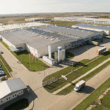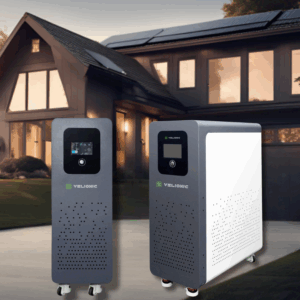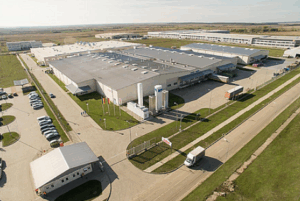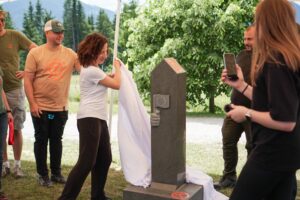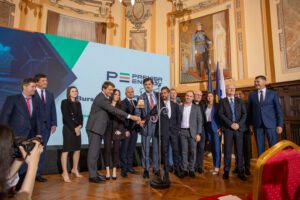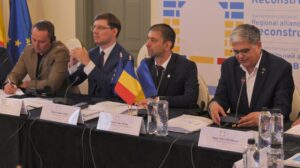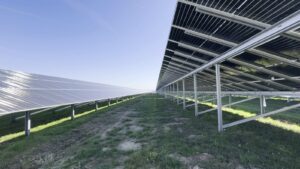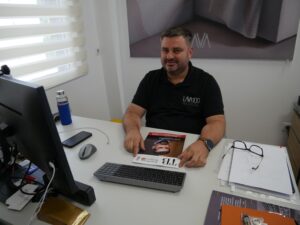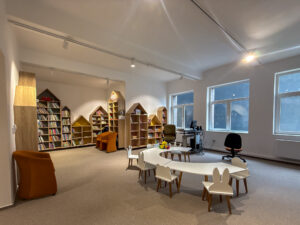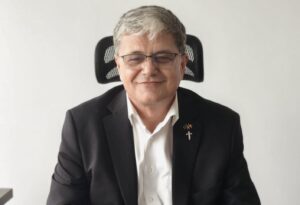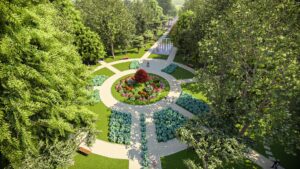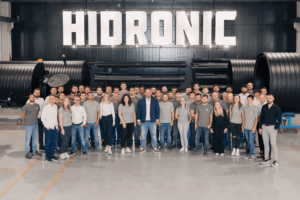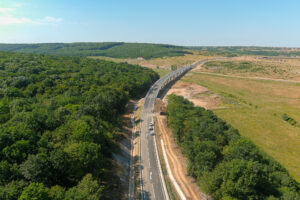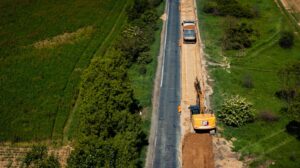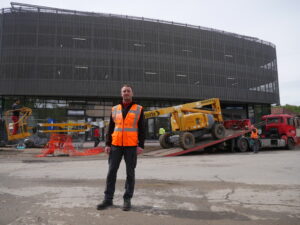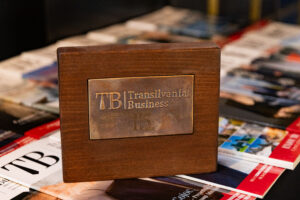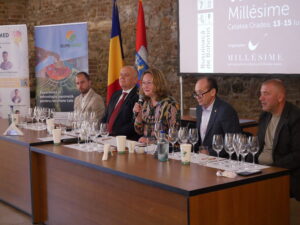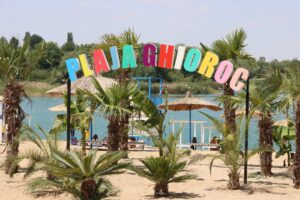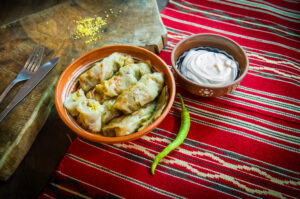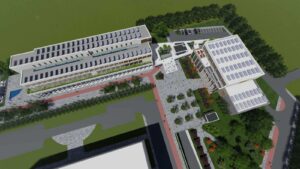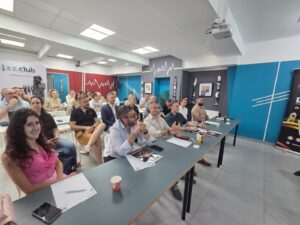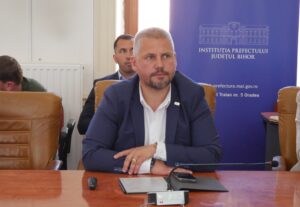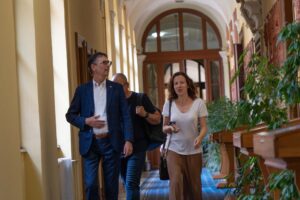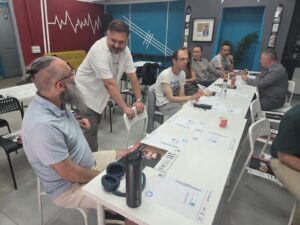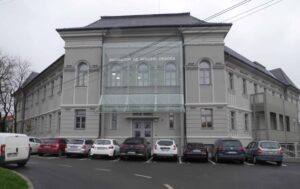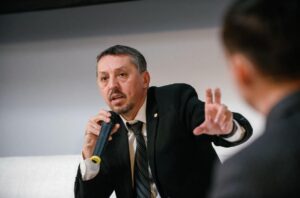So are the waters as the soil through which they flow
Pliny the Elder
Expansion of city life and pollution have taken their toll on water, and drinking water primarily. It is also water that we carry in our bodies: 75% when we are children, 55-60% in our adulthood, and about 50% in our old age. So we depend on water, though decreasingly, as we pass through life. The water contents in the various organs of our body – brain, lungs, heart, kidneys – ranges between 65% and 85%. The blood running through our veins contains water in a proportion of 83%, the muscles – 80%, the skin – 65%, the hair is 70% water, and even the bones are made of 20% water. The water stock in the human body is renewed at a daily rate of 15% in children, and 6% in grownups, which means that, every five and a half weeks, our body changes.
But what does the water do in our body? With its universal solvent capacity, water carries the nutrients to all the calls, keeps the kidneys working, washes toxins away, regulates body temperature, hydrates the skin, and maintains the moisture of the eyes. Our digestive system needs 10-15 litres of water to function. In other words, we are water, and, more importantly, we are the water we drink so that the vital processes in the body tissues could be kept going. Water never comes to a standstill in our body, it keeps working. Metaphorically speaking, we are like a water spring that “busies itself” for a while in our body. Failing this „live water”, we wouldn’t be alive. Water is mysterious as it is miraculous. Maybe ancient philosopher Thales of Miletus wasn’t just being poetic when saying that „water is at the groundwork of all beings”. He was simply stating a scientific truth which, at the time, he did not have the means to prove.

How have urbanisation and pollution changed Man’s relation with water? First, city-dwellers no longer drink well water, they drink tap water, which comes through a pipe. And if tap water is not good to drink, what does Man do? He either buys a water filter, which is not that cheap, and therefore not within everybody’s means, or he buys drinking water. And this is how city dwellers drink bottled water from the store, the only reliable source, knowing that tap water is not always the best, and that the consumer anyway has no means to test it.
What is the “Natural mineral Water”?
Mineral waters in Transylvania have been known since Roman times, from the evidence the Romans left behind. The concept of spring water that appears on the labels of some of the brands became a commercial name after WW II, and is strictly regulated in the EU.
The ordinary consumer will readily perceive the difference between tap water and mineral water. Mineral water is carbonated, i.e. it contains a certain amount of carbon dioxide, which lends the water an astringent and salty taste that gives a cooling feeling. Traditionally, mineral water was known for its therapeutic properties, and advertising made it popular for this feature. Many of the Transylvanian mineral brands have gained notoriety for their healing properties. Like in the case of other products, the legend became part of the brand, and an intrinsic quality thereof. At the beginnings of its history, mineral water was shrouded in magic, and seen both as nourishment, cure, and holy sacrament coming from Nature’s own hands. About 200 years ago, when drinking mineral water became a fashion throughout Europe, the medical science was short of the necessary knowledge and techniques to cure all ailments, which left ample room to traditional healing procedures, which explains why the discovery of the beneficial effects of mineral water turned it into panacea.
The definition of mineral water was adjusted after the establishment of the Common Market and the European Single Market. A Council Directive dated 15 July 1980 governs the criteria by which water can be called naturally mineral or simply drinking water for human consumption, on the entire territory of the EU. This Directive, No. 777/1980, was transposed into Romanian legislation under Government Resolution 1020/2005.

Appendix 1 to the Directive sets forth that natural mineral water means microbiologically safe water coming from underground water or from an underground aquifer, and which is tapped at the source or through drilling wells. Natural mineral water differs from the common drinking water through the following features: a) its own nature, meaning the mineral composition, oligo-elements and other constituents; b) the purity of the underground source. Such water must be evaluated by means of approved scientific methods, by the relevant authorities, with respect to its hydrological, physical, chemical, microbiological, pharmacological, physiological, and chemical properties. The extraction area must be carefully protected, free of any contamination, with extraction directly from the source, without interference in the water’s composition, so that the water maintains its properties after bottling. The mineral contents is not necessarily determined by the concentration of carbon dioxide, but by the minerals (calcium, magnesium, potassium) with which it is enriched by the rocks from which it originates. As for the mineral water’s healing powers of which so much fuss was made in the past, Directive 2009/54/CE forbids mineral water brands to be advertised as featuring preventive or curing properties.
To be extracted and marketed, mineral water needs recognition under both national and international regulations that lay down very strict procedures. The first to be obtained is the certification of the source, the spring or the drilling well where it originates. Water extraction must comply with standard technologies ensuring the quality of water. The captured water must then be verified and tested for a period of at least one year, to detect any fluctuations of its chemical values and the consistency of its composition with the accepted protocols. The data so obtained will reveal the profile of the geological structure embedding the water. Based on the information regarding the water parameters during the test period, the relevant authority decides the permitted output and the chemical composition to be maintained all along the operation of the source. There are also inspection rules for the pipes transporting the water, the storage reservoirs, the sanitation conditions, the bottling and labelling of the water for market purposes. To make sure that its properties are not altered or tampered with, the water must not come in contact with the air around, and the materials used along the entire production chain, from extraction to bottling, must be chemically inert, so that the mineral water in the bottle reaching the consumer should have the same properties as the water at the source.
No mineral water brand may be marketed unless acknowledged by publication in the relevant official gazettes of national and European relevance, indicating the trade name, the extraction source, and the place of bottling.
The Mineral Waters of Transylvania
Among the many natural resources with which Transylvania’s soil is blessed, the drinking waters are one of them. Underground waters have, in places, come out through outlets carved through the soil or through rock, sparkling with their pure, crystal-clear, mineral-rich and refreshing burble, inviting travellers to dink them.
Borsec ranks by far the highest in demand, the most popular in Romania, and one of the most famous Romanian brands in the world, with a history of over 200 years. The Borsec brand is the property of the biggest Romanian company in the beverage industry, which is also the top bottling company in Romania. Borsec’s springs are located in the intra-Carpathian depression situated in the Harghita County, in the heart of the Eastern Romanian Carpathians.

Though we do not know for sure whether the Romans were the first to use the Borsec water, they were however the first to leave testimonies behind. Their passage through the Borsec area is certified by the coins bearing the effigy of Constantine, dating back to the 4th century AD, and found in 1857 at the archaeological site of Tulgheș. An 1863 chronicle by Meyr Ignacz recounts the legend of a shepherd from Săliștea Sibiului, who, while driving his flock to the plains of Moldavia, came across the mineral water spring in Borsec, from which he drank water and was cured of his ailment. The fact is alleged to have happened sometime at the beginning of the 16th century. The legend does not specify what ailment the shepherd was suffering from, but the story is sure to have increased the fame of the springs. The then prince of Transylvania himself, Sigismund Bathory, is said he was having that water regularly on his table both as a drink and as a cure. At the time, the Borsec water was carried to the court in Alba Iulia in oak barrels, to preserve its temperature, freshness, and healing properties. Before the 18th century was over, the Borsec Springs had acquired European fame, the region became a spa, with wooden lodges and public baths, where sick people from within the country and from outside its borders came to seek health.
1803 was a turning point in the history of Borsec as a brand. While in Borsec for a cure, an Austrian from Vienna, Valentin Gunther, recovered from a chronic illness and, thrilled by the miraculous properties of the Borsec water, decided to put it in receptacles and carry it all over the world. The intrepid Gunther took a lease on the ground around the Borsec springs and set up a business with Anton Zimmethausen, a member of the Vienna City Council, and a mining engineer and glass maker named Eisner. It was Eisner who opened a bottle-making workshop to provide the water business with the requisite bottling material locally. Since 1806, the Borsec water sold in Austro-Hungary came in glass bottles filled at the source. During the first year since the inception of the business, more than 3 million litres of Borsec water were produced. At the 1873 International Fair in Vienna, Borsec Water was medalled by Emperor Franz Josef and was crowned The Queen of Mineral Waters.
After WW I, the business was reorganised as The Borsec Natural Spring Water company, and managed by the Chrisssoveloni Bank until 1943. The company was transferred to state property in 1948. Between 1952 and 1989, three new extraction and bottling lines were installed, and the production site was connected by rail to Toplița for further shipment. In communist times, Borsec water was highest in demand at home and abroad, in countries like Israel, Germany, Belgium, France, Sweden, USA, etc., where 6 to 10 million bottles were exported annually. Each country received the water in personalised bottles.
In 1998, the Borsec mineral water facility was turned private, becoming the property of Romaqua Group Borsec. Since then, the company has invested more than 220 million euro in state of the art know-how and equipment for top quality of its production. It operates with over 2,000 workers, 70% of the labour force in Borsec being Romaqua Group employees. The Group’s philosophy is to exploit the mineral water springs without exhausting the sources or harming the environment, in brief without jeopardising the need for clean, high quality water of the coming generations. The company’s production sites consist of 17 lines that include PET bottles manufacturing and bottling facilities totalling an annual capacity of over 1 billion litres.
The qualities of Borsec water have been rewarded with diplomas and medals won in many international exhibitions and show-rooms, such as : the Medal of Merrit at the Vienna International Fair in 1873, The Honorary Diploma at the Trieste Exhibition of 1876, The Honorary Diploma at the Paris World Exhibition, 1878, the Gold Medal at the Poznan International Fair, 2004, Gold Medal for the best carbonated bottled water at Berkeley Springs, USA, 2004, the Grand Gold Label for quality at Monde Selection, Brussels, 2005.
The geographical area from Toplița to Scaunul Rotund Borsec has been included in Nature 2000, as a site of European importance for its outstanding natural riches: spruce forests, fossil flowers, rare species of plants, a varied fauna that populates it (brown bears, capercailzies, Carpathian stags, deer, wolves, bob cats, vipers, tritons, all kinds of molluscs and fish). The mineral water springs are part of the natural heritage of this 5,666 ha (approximately 14,000 acres) natural reserve. Romaqua Group Borsec became the custodian of the site under the custody agreement with Romania’s Ministry of Environment and Forests.
Stânceni is a new mineral water brand, managed by Romaqua Group since 2006. The Stânceni springs are in the Eastern Carpathians, in the protected area of the Călimani Mountains Natural Reserve. Stânceni is a carbonated oligomineral water, with a low contents of mineral salts, and with hypotonic properties that make it easily assimilated into the body. Its properties were recognised at the Mineral Water Challenge – International Mineral Water Awards hosted by Portugal in 2015, where it won the gold medal for a score of 97 out of a maximum of 100 points. There it came in competition with 175 water brands all over the world.

Perla Harghitei is a brand that has its source in the village of Sâncrăieni, Harghita County, in an area known as Ciucul Inferior, one of the richest in Transylvania, with more than 80 sources of mineral water in Sâncrăieni alone. The Sâncrăieni source became operational in 1952. Its main bottling facility, which brings the company the highest revenues, was built in 1974. Perla Harghitei was established in 1990 as an entirely state-owned company, which in 1995 became private.
The waters under the brand name of Perla Harghitei are microbiologically pure, with a balanced contents of minerals, tapped and bottled without human interference in its biochemical properties. The bottling line is drastically supervised, and in the process, several quality tests are run to measure the levels of carbon dioxide, the Ph., mineral contents, microbiological features, etc. In 2005, prior to Romania’s accession to the EU, Perla Harghitei was recognised as a ”natural mineral water” by a German institute, in compliance with the European Single Market Standards. The properties of the Harghita mineral water were also recognised in the USA, where in 1999 it was awarded the gold medal at the Berkley Springs International Water Tasting, Virginia. The Perla Harghitei Company merged, in 2009, with Kreiten, to form Harghita S.A., and its products, among which the Tiva Harghita mineral water brand, are now part of the Perla Harghitei portfolio. The products marketed by Perla Harghitei fall into three categories, distinguished by their contents of carbon dioxide: carbonated, which has a CO2 contents of minimum 3.500 mg/l; partly de-carbonated, with a CO2 contents of maximum 1.300 mg/l; and non-carbonated or still water.
Tușnad is a brand of mineral water that won recognition as early as the 16th century, when the first written reference to it is known. The Tușnad region used to be known in old times as the Whispering Fields, due to the burbling sound made by the springs. Like in other stories related to mineral water, Tușnad draws is fame from the legend of a healing miracle. It is the story of a shepherd whose feet, ailing from the sores of barefoot walking, got cured of all wounds in three days, after walking in the swamp around the Tușnad springs. The news of this wonder spread, and many suffering people in the area or from afar came to find a cure for their afflictions in the miraculous waters.

Tușnad is lying in a unique setting in Transylvania, with some of the most popular touristic attractions like the Sfânta Ana Lake, the Mohos oligotrophic swamp, now a natural monument the flora of which features rare species like the rusty rosemary and an insectivorous plant called Roua Cerului (Sky Dew); the swamps Valea de Mijloc, Benes, Stânca Șoimilor (Falcons’ Rock), Băile Tușnad (Tușnad Baths).
Towards the end of the 19th century, the Tușnad springs yielded an annual production of 50.000 bottles, some of which was sold in many countries of Europe. The administrator of the Tușnad springs is Apemin Tușnad, established in 1999 after the split-up of Perla Harghitei. Since the take-over, Apemin Tușnad has invested over 10 million euro to modernise and upgrade the tapping and bottling facility. The output of 40,000 litres per hour places Apemin Tușnad among the top Romanian mineral water producers. It operates two Sig Simonazzi filling lines, each having a capacity of 12,000 bph.
Apemin Tușnad delivers to the market several brands: the Tușnad naturally carbonated mineral water with a maximum CO2 contents of 2.200 mg/l, the pure spring water under the brand name Izvorul Zânelor, and the microbiologically pure drinking water Izvorul Ascuns.
Zizin is a microbiologically pure oligomineral water straight from the source, with a balanced contents of minerals. It comes from an aquifer in the contact area between the Ciucaș Mountain Range and the Brașov Depression, which is part of the Ciucaș Nature 2000 site. The oldest records about the Zizin waters date back to 1773, when a Dr. Lucas Wagner made them known for their therapeutic properties. Another reference to the Zizin waters can be found in Synopsia fontanae Austriae, a book published by V. F. Tauche in Vienna. In 1818, the water was tested chemically for the first time by Belteky. An 1873 chronicle titled The Description of the Szekler Country, by Balázs Orbán, speaks about three mineral water springs at Zizin, all of them described as having healing powers, and named: Ferdinand Spring, Francisc Spring, and Ludovic Spring.
The water from the Ferdinand spring was recommended for drinking at feasts and distinguished dinners, the water from the Francisc spring was praised for its healing properties. Ferdinand water was considered equal in quality to other famous springs of the time, such as Luhacovice, St. Nectaire, Vals, Vic-sur-Cère, Selters, Ems, Gleichenberg and Niederselters. In his 1891 book The Description of Waters and Spas in Transylvania, author Hankó Vilmos placed the water of the Ludovic spring on a par with those of Marienbad, Franzensbad and Pyrmont, due to the iron contents of its formula. A forth spring, named Bela, was discovered shortly before WW I. In 1927, under a decree of the Ministry of Health, the town of Zizin was recognised as a small watering place, open to locals and visitors who wanted to take drinking and bathing cures.
The first bottling station at Zizin was commissioned in 1936, for the Ferdinand spring. During WW II, the Zizin facility expanded its production by enhancing the bottling speed. According to the company’s statistic records, in October 1940 the bottling station produced 59.316 one litre and 0.33 litre bottles. One of the turning points in its history was the development in 1970 of the bottling factory.
The Zizin water is managed by Apemin Zizin. In the early 1990s, the Zizin mineral water was among the few water brands complying with the certification standards under the relevant legislation. The Zizin hydro mineral reservoir was managed by the National Mineral Water Company since its beginnings. In 1991, the management was transferred to the then established joint stock company Apemin Zizin S.A., which was licenced to exploit and market the water captured in that area. In the autumn of 1997, Apemin Zizin S.A. was turned to private hands, and started undergoing a thorough technological upgrading and modernisation.
Perla Apusenilor is a brand of mineral water with a balanced contents of minerals, and pure microbiological composition. Its source is at Chimindia, Hunedoara County, and is the property of MINEXFOR S.A., based in Deva. Although knowledge about the springs goes a long way back, with a history dating since the Austro-Hungarian Empire, when the water used to travel to Vienna in barrels, the old facility was rather rudimentary. Perla Apusenilor comes to the market in varieties distinguished by the CO2 contents: Carbogazificată Forte (highly carbonated) with a CO2 contents of minimum 3.000mg/l, Carbogazificată (carbonated) with a minimum CO2 of 2.500mg/l, Partially Decarbonated (Decarbogazificată parțial) with a CO2 of maximum 1.200mg/l.
By Vianu MUREȘAN
(From the special edition of TB 86 – „ENJOY TRANSYLVANIA!” – May/June 2019)

